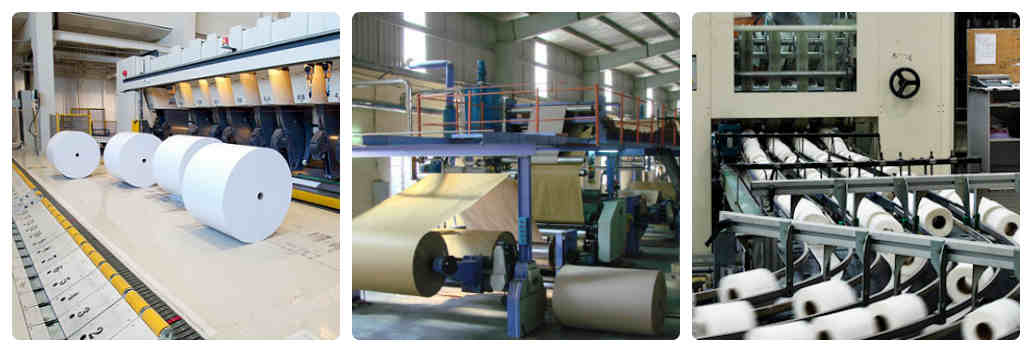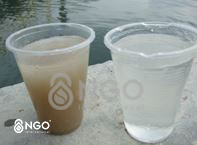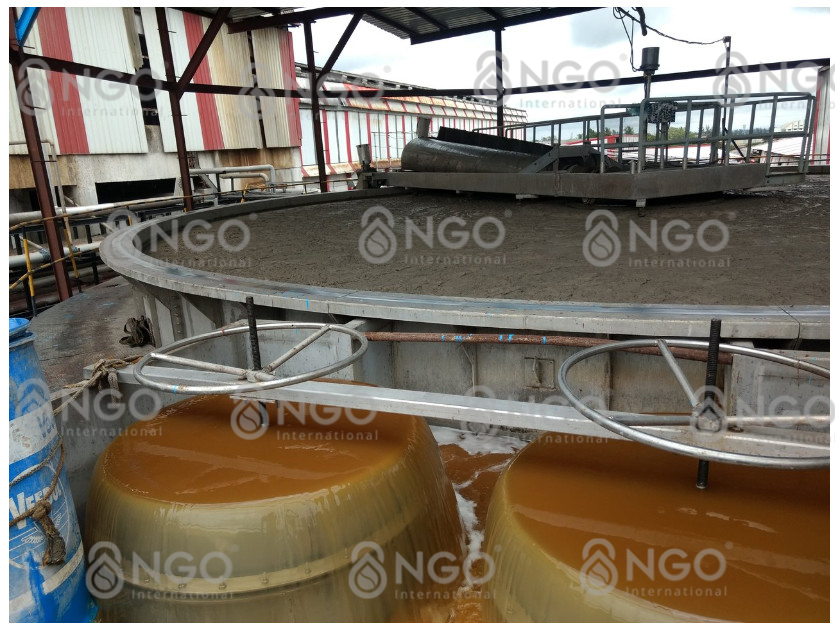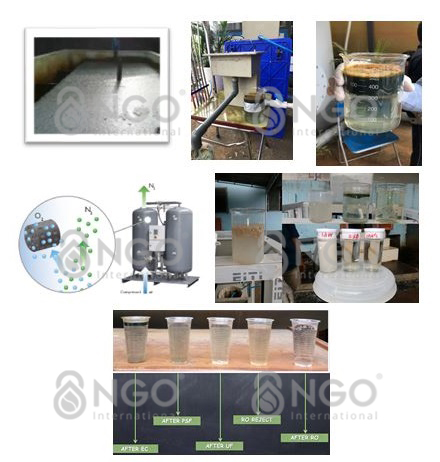WASTEWATER TREATMENT SOLUTIONS TO PAPER MANUFACTURERS

Compared with many other manufacturing industries, paper industry (including cultural paper, packaging paper, wrapping paper, votive paper, etc.) will have a high level of pollution, large emissions and greatly affects people and the surrounding environment, if pollution from untreated wastewater sources is not solved.
In addition, handlling the high level of pollution in paper wastewater, and meet the needs of water treatment or water reuse of businesses is a headache for many business owners.
Unlike simple types of wastewater, such as domestic wastewater, urban wastewater, etc., environmental consultancy units without knowledge of production characteristics of paper industry, or have never handled paper wastewater will have no ability to provide a reasonable solution to this industry's wastewater.
1. Nature of waste discharge sources during production
|
No. |
Waste sources |
Pollution characteristic |
|
1 |
From cooking process and after-cook washing |
Contains most dissolved organic substances, cooking chemicals and a part of fiber. - Organic composition: mainly in lignin black solution dissolved in alkaline solutions, hydrated hydrocarbon products, organic acids. - Inorganic composition: Contains cooking chemicals, mainly alkali Natrisulfite which links organic substances in alkali. In addition, there is a small part is NaOH, free Na2S, Na2CO3. |
|
2 |
From bleaching or ink removal |
In this stage, chemical or semi-chemical method is usually applied, containing organic compounds, soluble lignin, etc., combined with toxic detergents that have the ability to bio-accumulate like organochlorine compounds. It has high BOD5 and COD values that can be up to 700mg/l and 2500mg/l. The concentration of suspended solids is many times higher than the permitted limit. It is difficult to handle high colour level with either microorganisms or chemicals. |
|
3 |
Waste from pulping and paper forming process |
Wastewater at this stage contains raw waste (such as bandage), fibres (cellulose), pulp in suspended form, additives such as turpentine, colouring, kaolin, linear starch, buffer |
|
4 |
Waste from equipment washing, floor washing, and overflow |
Waste contains suspended substances and spillage which can be removed by filtering or settling |
|
5 |
Domestic wastewater |
It is often overlooked and still flushed straight into the drainage system behind the septic basin |
2. What are the differences and added benefits for businesses that NGO’s solutions bring to the paper industry?
- Recover up to 95% of cellulose fibres in wastewater and return to production with good yarn quality
- Be able to split short and long fibres for production purposes of the enterprise
- Use less chemical; ensure savings of 30% - 50% on chemical costs compared to current technology on the market
- Ensuring high recirculation rate for production, saving water costs, reducing the amount of waste discharged into the environment, ensuring a stable microbiological system.
- Design to be 100% non-microbiological and commit to A standard if the enterprise does not want to use microbiological solutions, operate at desired time instead of 24/24h operation.
2.1 Recovering pulp, separating fibers and circulating
All cellulose powders in all size ranges will be recovered through flotation device, designed specifically for paper wastewater, ensuring 93% of the treated water after recovery, output TSS <100mg/L, flotation time is especially low thanks to micro-sized air bubbles sticking to suspended solids in water and flotation of cellulose fibers onto the water surface, while suspended solids and sediments will settle at the bottom due to its gravity. The flotation speed is very fast, only about 1 minute thanks to the high solubility of oxygen in water. In many paper mills with the input TSS of waste stream ≥ 2000 ppm, its TTS after the flotation phase is only 80-90 ppm.


2.2 Treatment of COD and color by microbiological method
Depending on the rate of water reuse and discharge capacity, the microbiological system will be designed accordingly. The microbiological system consists of micro-basins in DO environments from 0 to 5, biological seddiment basins and discharging system to the environment or returning to the circulation.

2.3 Treatment of COD and color by chemical reaction and physical without using chemicals

We have experience in pulp and paper wastewater treatment of over 400 paper mills worldwide in order to provide suitable solutions to businesses in Vietnam, committing to quality with dedicated service.
Mores: Wastewater treatment solutions to paper manufactuers https://www.youtube.com/watch
If you are interested in solutions to wastewater treatment at slaughterhouse, please contact NGO by phone number (024) 3566 8225 or email office@8ngo.com for direct advice.
-
 Wastewater treatment
Wastewater treatment
-
 A standard domestic wastewater
A standard domestic wastewater
-
 B standard domestic wastewater
B standard domestic wastewater
-
 Pig Farm Wastewater
Pig Farm Wastewater
-
 Textile dyeing wastewater
Textile dyeing wastewater
-
 Paper industry wastewater solution
Paper industry wastewater solution
-
 Textile Dyeing Wastewater & Industrial Washing
Textile Dyeing Wastewater & Industrial Washing
-
 Slaughter wastewater treatment solution
Slaughter wastewater treatment solution
-
 Aquaculture wastewater
Aquaculture wastewater
-
 Starch wastewater
Starch wastewater
-
 Petroleum wastewater
Petroleum wastewater
-
 Beer wastewater
Beer wastewater
-
 Other industrial wastewaters
Other industrial wastewaters
-
 BioPM - Organic Industrial wastewater treatment solution
BioPM - Organic Industrial wastewater treatment solution
-
 MBR solutions
MBR solutions
-
 Conventional activated sludge (CAS)
Conventional activated sludge (CAS)
-
 Moving bed biofilm reactor (MBBR)
Moving bed biofilm reactor (MBBR)
-
 Anaerobic- Anoxic-Aerobic (AAO)
Anaerobic- Anoxic-Aerobic (AAO)
-
 Sequencing batch reactor (SBR)
Sequencing batch reactor (SBR)
-
 Physical & Chemical methods
Physical & Chemical methods
-
 Supply water treatment
Supply water treatment
-
 Cooling system water
Cooling system water
-
 Water treatment for food and Beverage production
Water treatment for food and Beverage production
-
 Ultra pure water supply solution for electronic industry
Ultra pure water supply solution for electronic industry
-
 Pure water supply for pharmaceutical manufacturers
Pure water supply for pharmaceutical manufacturers
-
 Water Supply treatment with ion exchange method
Water Supply treatment with ion exchange method
-
 Ordor Treatment
Ordor Treatment

